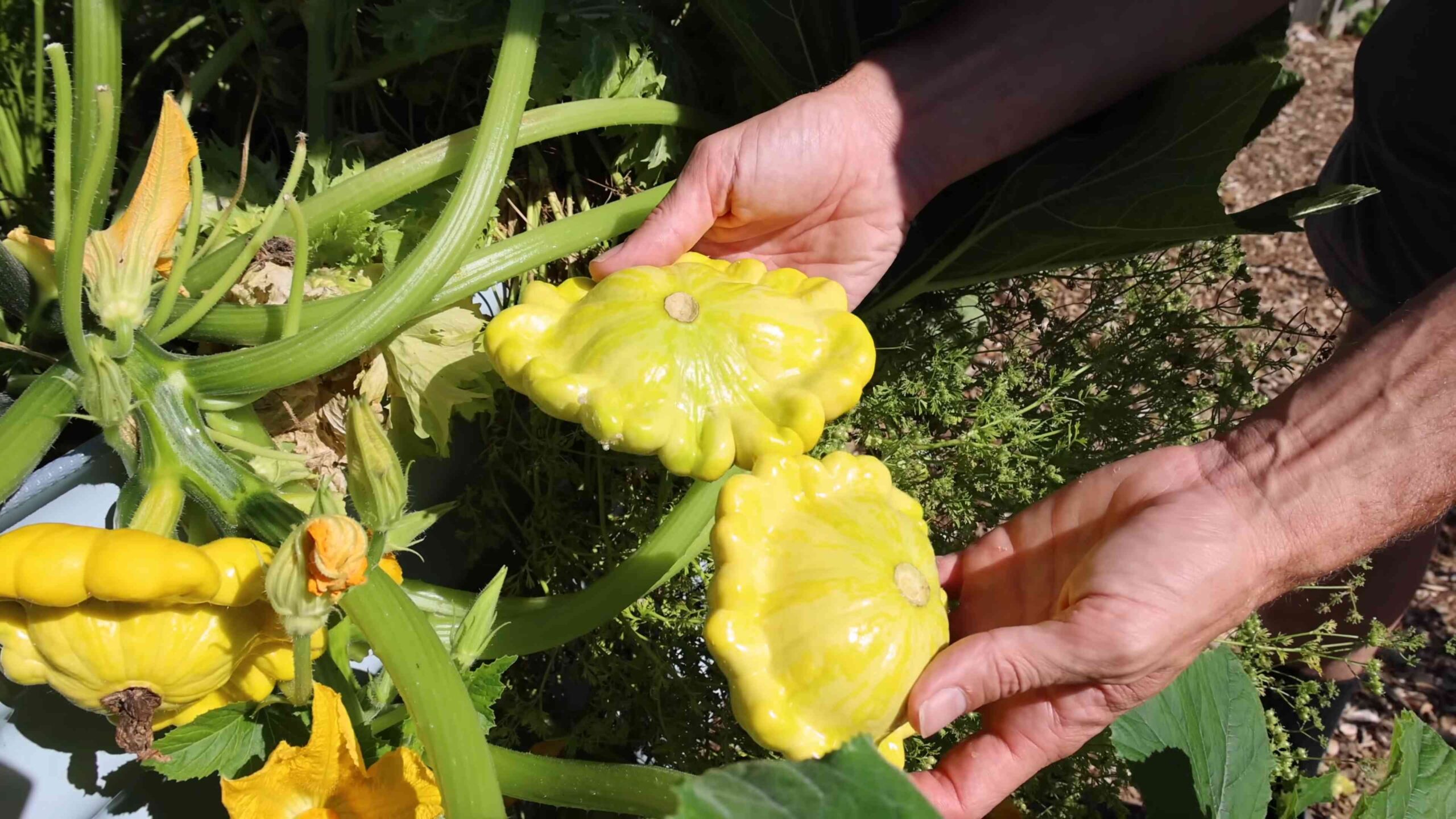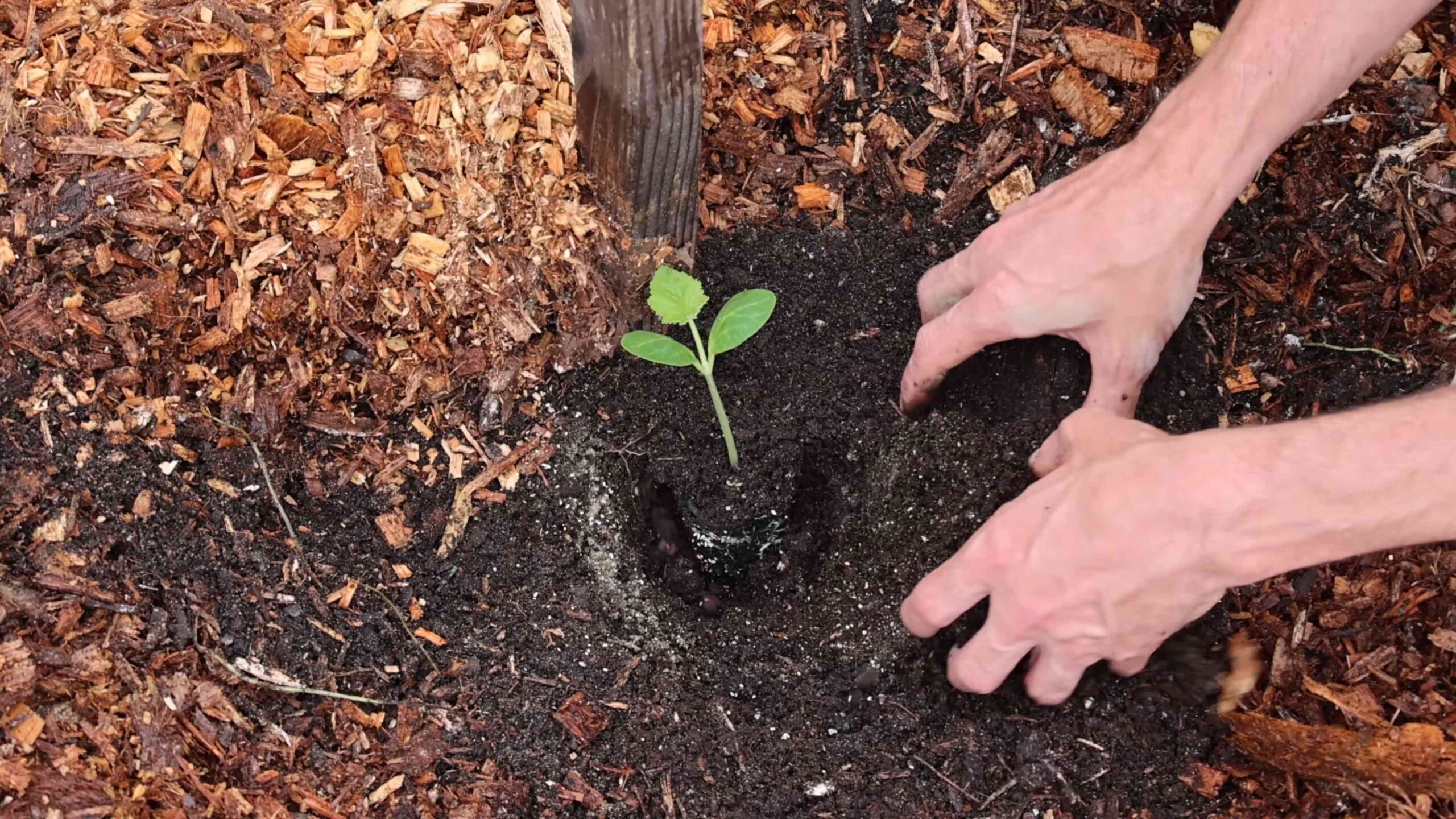Grow Squash Vertically and unlock a world of gardening possibilities! Are you dreaming of a bountiful squash harvest but short on space? Or perhaps you’re tired of battling sprawling vines that take over your entire garden? I get it! I used to think growing squash was only for those with acres of land, but then I discovered the magic of vertical gardening.
For centuries, cultures around the globe have utilized vertical gardening techniques to maximize yields in limited spaces. From the hanging gardens of Babylon to the ingenious terrace farming of the Incas, the concept of growing upwards is deeply rooted in human history. It’s a testament to our resourcefulness and our desire to connect with nature, even in the most challenging environments.
That’s where this DIY guide comes in! Grow Squash Vertically is more than just a trend; it’s a game-changer for home gardeners. Not only does it save space, but it also improves air circulation, reduces the risk of pests and diseases, and makes harvesting a breeze. Imagine plucking ripe, juicy squash right off the vine without having to bend over or navigate a tangled mess. Sounds amazing, right? I’m going to show you exactly how to do it, step-by-step, with simple and affordable DIY solutions. Let’s get started and transform your garden into a vertical squash paradise!

Growing Squash Vertically: A DIY Guide to Maximize Your Harvest
Hey there, fellow gardeners! Are you dreaming of a bountiful squash harvest but short on space? Well, I’ve got the perfect solution for you: growing squash vertically! It’s a fantastic way to save space, improve air circulation, and even make harvesting easier. Trust me, once you try it, you’ll be hooked. Let’s dive into how you can build your own vertical squash garden.
Choosing the Right Squash Variety
Before we get our hands dirty, it’s crucial to pick the right squash variety. Not all squash are created equal when it comes to vertical gardening. You’ll want to choose bush or semi-vining varieties that are more compact and manageable.
Here are some of my favorite varieties for vertical growing:
* Zucchini: Black Beauty, Costata Romanesco, and Gold Rush are all excellent choices. They produce delicious fruits and don’t get too unruly.
* Summer Squash: Yellow Crookneck and Patty Pan are also great options. They’re relatively compact and produce quickly.
* Winter Squash (with caution): While generally larger, some smaller winter squash varieties can be grown vertically with extra support. Consider Delicata, Acorn, or even smaller Butternut squash varieties. Be prepared to provide significant support for the fruits as they grow. Avoid larger varieties like Hubbard.
Building Your Vertical Support System
Now, let’s get to the fun part: building the structure that will support your squash vines. There are several options, and I’ll walk you through a few of my favorites.
Option 1: The Trellis Method
This is a classic and relatively simple approach.
Materials You’ll Need:
* Wooden or metal posts (at least 6 feet tall)
* Heavy-duty wire mesh or netting (with openings large enough for you to reach through to harvest)
* Zip ties or garden staples
* Measuring tape
* Gloves
* Shovel or post hole digger
Step-by-Step Instructions:
1. Prepare the Ground: Choose a sunny location for your vertical garden. Squash needs at least 6-8 hours of sunlight per day. Clear the area of any weeds or debris.
2. Install the Posts: Dig holes for your posts about 2-3 feet deep and spaced 4-6 feet apart, depending on the length of your wire mesh or netting. Place the posts in the holes and backfill with soil, tamping it down firmly to secure them.
3. Attach the Mesh or Netting: Unroll your wire mesh or netting and attach it to the posts using zip ties or garden staples. Make sure the mesh is taut and secure. You want it to be strong enough to support the weight of the squash vines and fruits.
4. Reinforce if Needed: For heavier squash varieties, you might want to add extra support by running horizontal wires between the posts at different heights. This will help distribute the weight and prevent the trellis from sagging.
Option 2: The Pallet Garden
This is a great option if you’re looking for a more rustic and eco-friendly approach.
Materials You’ll Need:
* A sturdy wooden pallet (untreated is best)
* Heavy-duty landscape fabric
* Staple gun
* Potting soil
* Gloves
* Safety glasses
Step-by-Step Instructions:
1. Prepare the Pallet: Inspect the pallet for any loose nails or splinters and remove them. You might also want to sand it down a bit to smooth out any rough edges.
2. Line the Pallet: Cut pieces of landscape fabric to fit the back and sides of each section of the pallet. Staple the fabric securely to the pallet, creating pockets for the soil. Make sure the fabric is strong enough to hold the weight of the soil and plants.
3. Fill with Soil: Fill each pocket with high-quality potting soil. Leave a few inches of space at the top for watering.
4. Position the Pallet: Lean the pallet against a wall or fence in a sunny location. Make sure it’s stable and won’t tip over. You can also attach it to the wall or fence for extra security.
Option 3: The A-Frame Structure
This option provides excellent support and allows for easy access to your plants.
Materials You’ll Need:
* Wooden boards (2x4s or similar)
* Heavy-duty wire mesh or netting
* Screws or nails
* Drill or hammer
* Measuring tape
* Saw
* Gloves
* Safety glasses
Step-by-Step Instructions:
1. Cut the Wood: Cut the wooden boards to the desired length for your A-frame. I recommend making it at least 6 feet tall and 4 feet wide at the base. You’ll need four boards for the frame and additional boards for cross supports.
2. Assemble the Frame: Assemble the A-frame by connecting the boards with screws or nails. Make sure the frame is sturdy and stable. Add cross supports for extra strength.
3. Attach the Mesh or Netting: Attach the wire mesh or netting to the frame using staples or zip ties. Make sure it’s taut and secure.
4. Position the A-Frame: Place the A-frame in a sunny location. You can bury the legs slightly in the ground for extra stability.
Planting Your Squash
Now that your vertical support system is ready, it’s time to plant your squash!
Step-by-Step Instructions:
1. Prepare the Soil: Whether you’re planting directly in the ground or in containers, make sure the soil is well-draining and rich in organic matter. Amend the soil with compost or well-rotted manure.
2. Plant the Seeds or Seedlings: If you’re starting from seeds, sow them directly into the soil according to the package instructions. If you’re using seedlings, gently remove them from their containers and plant them at the same depth they were growing in before. Space the plants about 18-24 inches apart.
3. Water Thoroughly: Water the plants thoroughly after planting.
4. Mulch: Apply a layer of mulch around the base of the plants to help retain moisture and suppress weeds.
Training Your Squash Vines
As your squash vines grow, you’ll need to train them to climb the support structure. This is a crucial step for successful vertical gardening.
Step-by-Step Instructions:
1. Guide the Vines: Gently guide the vines towards the trellis, pallet, or A-frame. Use soft ties or twine to secure the vines to the support structure.
2. Prune as Needed: Prune any excessive foliage to improve air circulation and prevent disease. Remove any yellowing or damaged leaves.
3. Support the Fruits: As the squash fruits develop, they may need extra support, especially for heavier varieties. You can use slings made from pantyhose, netting, or fabric to support the fruits and prevent them from breaking off the vine. Tie the slings to the support structure.
Caring for Your Vertical Squash Garden
Maintaining your vertical squash garden is essential for a healthy and productive harvest.
Watering:
* Water your squash plants regularly, especially during hot, dry weather. Squash needs consistent moisture to thrive.
* Water deeply at the base of the plants, avoiding wetting the foliage, which can lead to fungal diseases.
* Consider using a soaker hose or drip irrigation system to provide consistent moisture.
Fertilizing:
* Fertilize your squash plants every 2-3 weeks with a balanced fertilizer.
* You can also use organic fertilizers like compost tea or fish emulsion.
Pest and Disease Control:
* Keep an eye out for common squash pests like squash bugs, squash vine borers, and aphids.
* Inspect your plants regularly and take action promptly if you see any signs of infestation.
* Use organic pest control methods like insecticidal soap, neem oil, or hand-picking pests.
* To prevent fungal diseases, ensure good air circulation and avoid overhead watering.
* If you notice any signs of disease, treat the plants with a fungicide.
Harvesting Your Squash
The moment you’ve been waiting for! Harvesting your squash is the reward for all your hard work.
Step-by-Step Instructions:
1. Know When to Harvest: The timing of the harvest depends on the squash variety. Summer squash is typically harvested when it’s young and tender, while winter squash is harvested when it’s mature and the skin is hard.
2. Cut the Squash: Use a sharp knife or pruning shears to cut the squash from the vine, leaving a few inches of stem attached.
3. Handle with Care: Handle the squash carefully to avoid bruising or damaging the skin.
4. C

Conclusion
So, there you have it! Growing squash vertically isn’t just a trendy gardening technique; it’s a game-changer for maximizing your harvest, conserving space, and adding a touch of visual appeal to your garden. We’ve explored the myriad benefits, from improved air circulation that combats common squash diseases like powdery mildew to the sheer joy of watching your squash vines climb and flourish.
This method is particularly beneficial for those with limited garden space, such as urban gardeners or those with small yards. Imagine transforming a cramped balcony or patio into a thriving squash haven! But even if you have ample space, vertical gardening offers advantages. It makes harvesting easier, reduces pest problems by lifting the fruit off the ground, and allows you to grow more squash in the same area.
Think of the possibilities! You could dedicate a sunny corner of your yard to a vertical squash garden, using a trellis, sturdy netting, or even a repurposed pallet as your support structure. You could even get creative with your container choices, using large pots, raised beds, or even upcycled containers like old tires or barrels.
Don’t be afraid to experiment with different varieties of squash. While smaller varieties like zucchini, yellow squash, and delicata are particularly well-suited for vertical growing, you can also train larger varieties like butternut squash or even some pumpkins with proper support. Just be sure to provide adequate support for the heavier fruits as they develop. Consider using slings made from pantyhose or fabric scraps to cradle the squash and prevent them from breaking off the vine.
Beyond the practical benefits, growing squash vertically is simply a rewarding experience. There’s something incredibly satisfying about nurturing a plant from seed to harvest and witnessing its transformation. And when you finally harvest your own homegrown squash, you’ll be rewarded with delicious, nutritious produce that you can use in countless recipes.
We encourage you to give this DIY trick a try. It’s easier than you might think, and the results are well worth the effort. Remember to choose a sunny location, provide adequate support, and water and fertilize your plants regularly. And most importantly, don’t be afraid to experiment and have fun!
Once you’ve experienced the joys of growing squash vertically, we’d love to hear about your experience. Share your photos, tips, and tricks in the comments below. Let’s create a community of vertical squash gardeners and inspire others to try this innovative technique. Let us know what varieties you tried, what support systems worked best for you, and any challenges you encountered along the way. Your feedback will help others succeed and make the most of their vertical squash gardens. So, get out there, get your hands dirty, and start growing squash vertically today! You’ll be amazed at what you can achieve.
Frequently Asked Questions (FAQ)
What types of squash are best suited for vertical growing?
Smaller squash varieties like zucchini, yellow squash, delicata, and acorn squash are generally the easiest to grow vertically. Their vines are less sprawling, and their fruits are lighter, making them easier to support. However, with proper support, you can also grow larger varieties like butternut squash or even some smaller pumpkins vertically. The key is to provide a sturdy trellis or support system and to use slings or other methods to support the heavier fruits as they develop. Consider the mature size of the squash when choosing a variety for vertical growing.
What kind of support system should I use for growing squash vertically?
There are several options for support systems, depending on your space and budget. A sturdy trellis made of wood or metal is a popular choice. You can also use netting, such as chicken wire or garden netting, stretched between posts. Repurposed materials like old pallets or ladders can also be used to create a unique and functional support system. The most important thing is to ensure that the support system is strong enough to support the weight of the mature vines and fruits. For heavier squash varieties, you may need to provide additional support for individual fruits using slings made from pantyhose, fabric scraps, or netting.
How do I train my squash vines to grow vertically?
As your squash vines grow, gently guide them up the support system. You can use plant ties or twine to secure the vines to the trellis or netting. Be careful not to tie the vines too tightly, as this can damage them. As the vines grow, continue to train them upwards, removing any side shoots or tendrils that are not needed. Pruning can help to improve air circulation and prevent diseases. Regularly inspect your plants and adjust the ties as needed to ensure that the vines are securely supported.
How often should I water and fertilize my vertically grown squash?
Vertically grown squash plants tend to dry out more quickly than those grown on the ground, so it’s important to water them regularly, especially during hot, dry weather. Check the soil moisture regularly and water when the top inch or two of soil feels dry. Avoid overwatering, as this can lead to root rot. Fertilize your squash plants every two to three weeks with a balanced fertilizer. You can also amend the soil with compost or other organic matter to provide essential nutrients.
How do I prevent pests and diseases when growing squash vertically?
Vertical growing can help to reduce pest and disease problems by improving air circulation and keeping the fruits off the ground. However, it’s still important to monitor your plants regularly for signs of pests or diseases. Common squash pests include squash bugs, squash vine borers, and aphids. Common diseases include powdery mildew and squash mosaic virus. If you notice any pests or diseases, take action immediately to control them. You can use organic pest control methods like insecticidal soap or neem oil. To prevent diseases, ensure good air circulation, avoid overwatering, and remove any infected leaves or plants.
What do I do if my squash fruits are too heavy for the vines to support?
If your squash fruits are becoming too heavy for the vines to support, you can provide additional support using slings. Slings can be made from pantyhose, fabric scraps, or netting. Simply create a sling that cradles the fruit and attach it to the trellis or support system. This will help to distribute the weight of the fruit and prevent it from breaking off the vine. Regularly inspect the slings and adjust them as needed as the fruits grow.
Can I grow squash vertically in containers?
Yes, you can definitely grow squash vertically in containers. Choose a large container that is at least 18 inches in diameter and depth. Make sure the container has drainage holes to prevent waterlogging. Use a high-quality potting mix that is well-draining. Provide a sturdy trellis or support system for the vines to climb. Water and fertilize your plants regularly. Container-grown squash may require more frequent watering and fertilizing than those grown in the ground.
What are some creative ways to support my vertical squash garden?
Get creative with your support systems! Use repurposed materials like old ladders, pallets, or even old tires to create a unique and functional vertical garden. You can also use decorative trellises or obelisks to add a touch of elegance to your garden. Consider using hanging baskets or planters to grow smaller squash varieties vertically. The possibilities are endless! Let your imagination run wild and create a vertical squash garden that is both beautiful and productive.
How do I know when my squash is ripe and ready to harvest?
The time it takes for squash to mature depends on the variety. Generally, summer squash like zucchini and yellow squash are ready to harvest when they are young and tender, about 6-8 inches long. Winter squash like butternut squash and acorn squash are ready to harvest when their skin is hard and their color is deep and rich. You can also check the stem of the squash. If the stem is dry and hard, the squash is likely ripe. Use a sharp knife to cut the squash from the vine, leaving a few inches of stem attached.
What if I don’t have a lot of sunlight in my garden? Can I still grow squash vertically?
Squash plants need at least 6-8 hours of sunlight per day to thrive. If you don’t have a lot of sunlight in your garden, you may still be able to grow squash vertically, but you’ll need to choose a location that gets as much sunlight as possible. You can also supplement with artificial light, such as grow lights. Choose a grow light that is specifically designed for plants and provide it with the appropriate amount of light. Monitor your plants closely and adjust the lighting as needed.





Leave a Comment